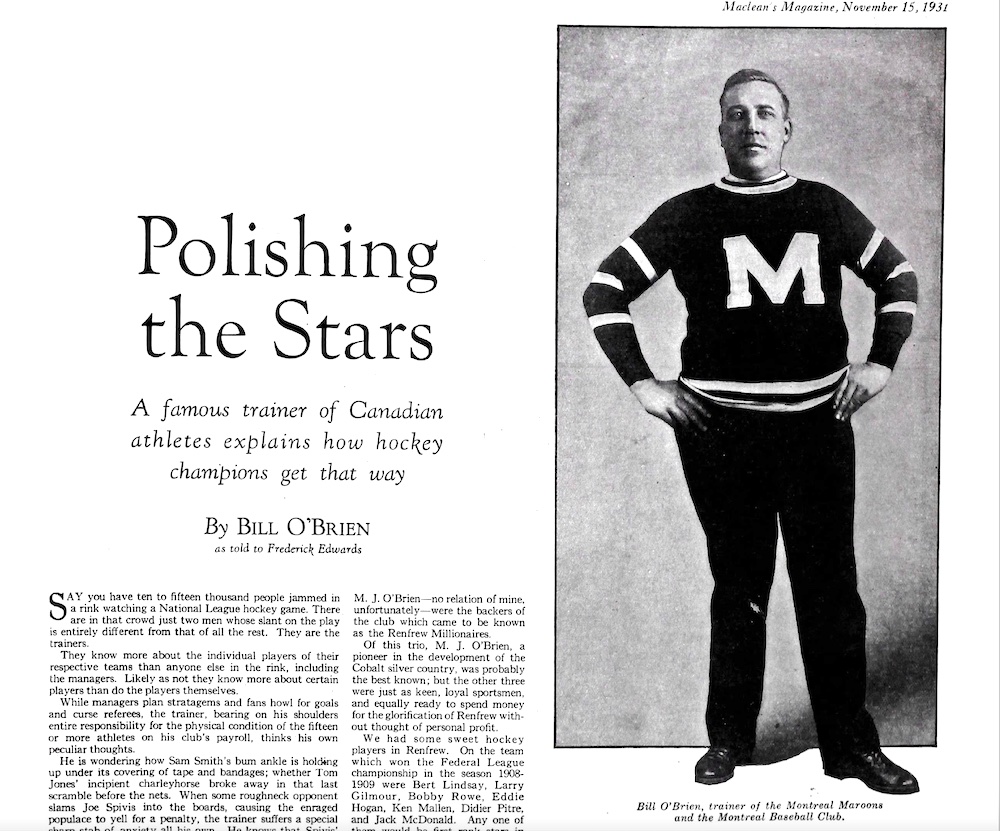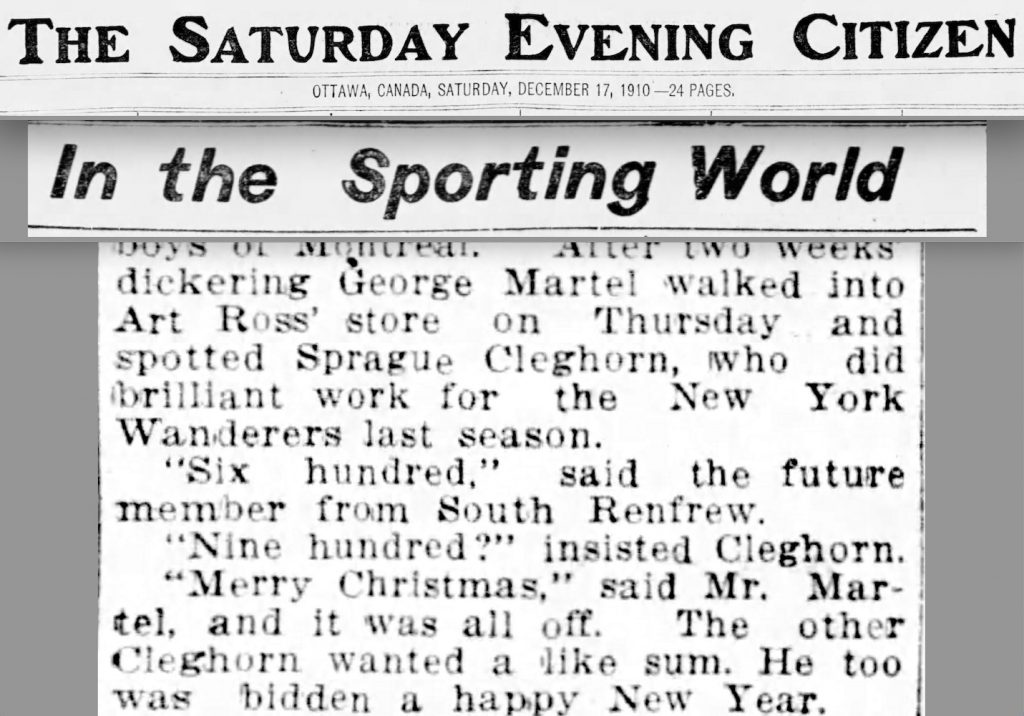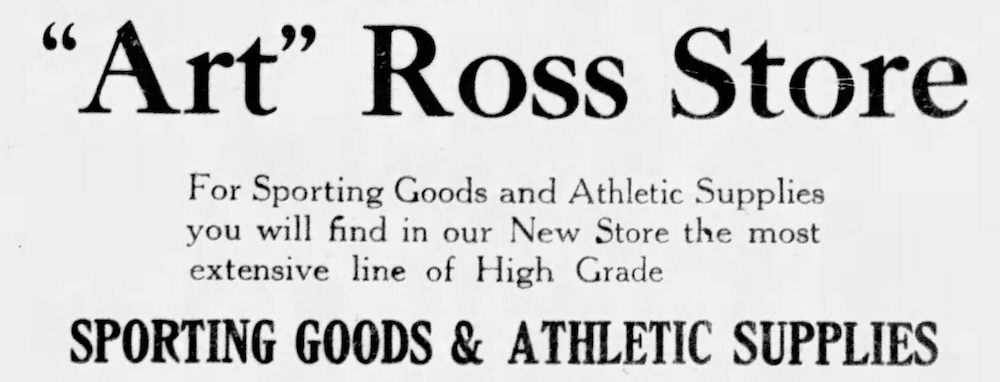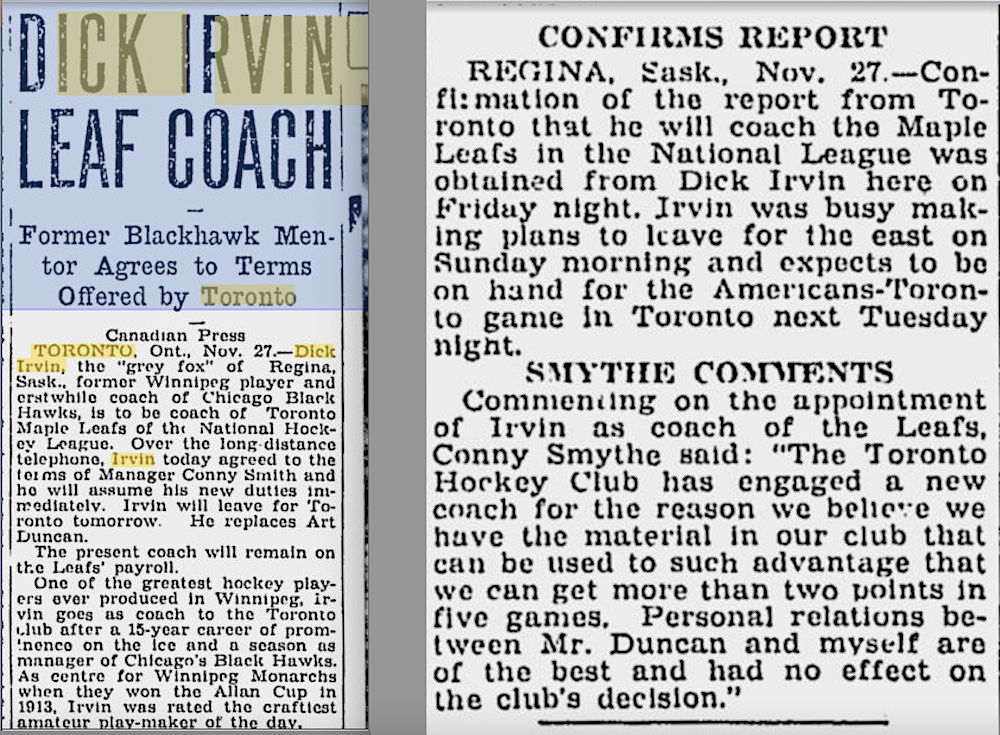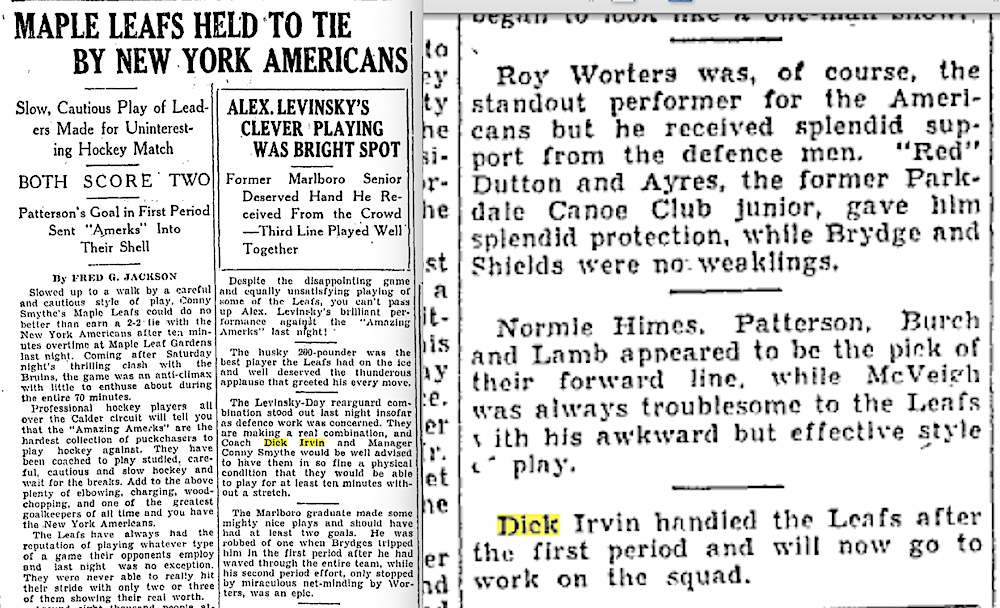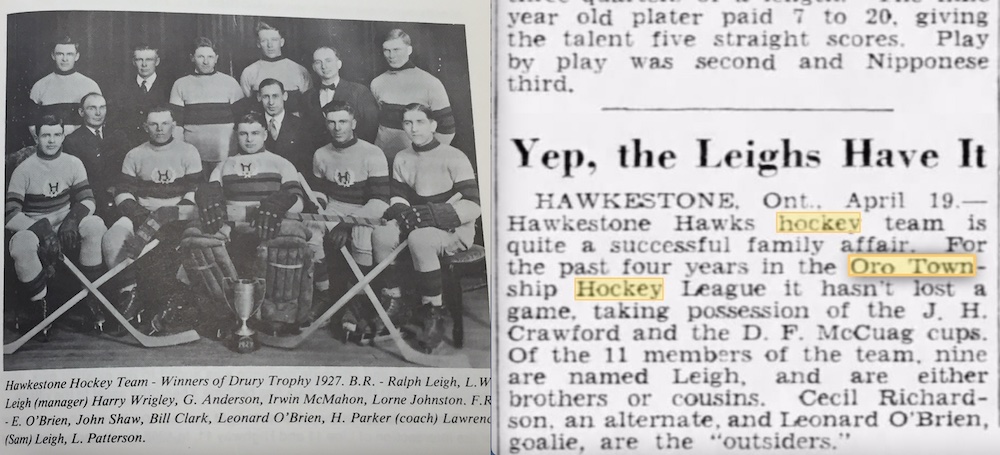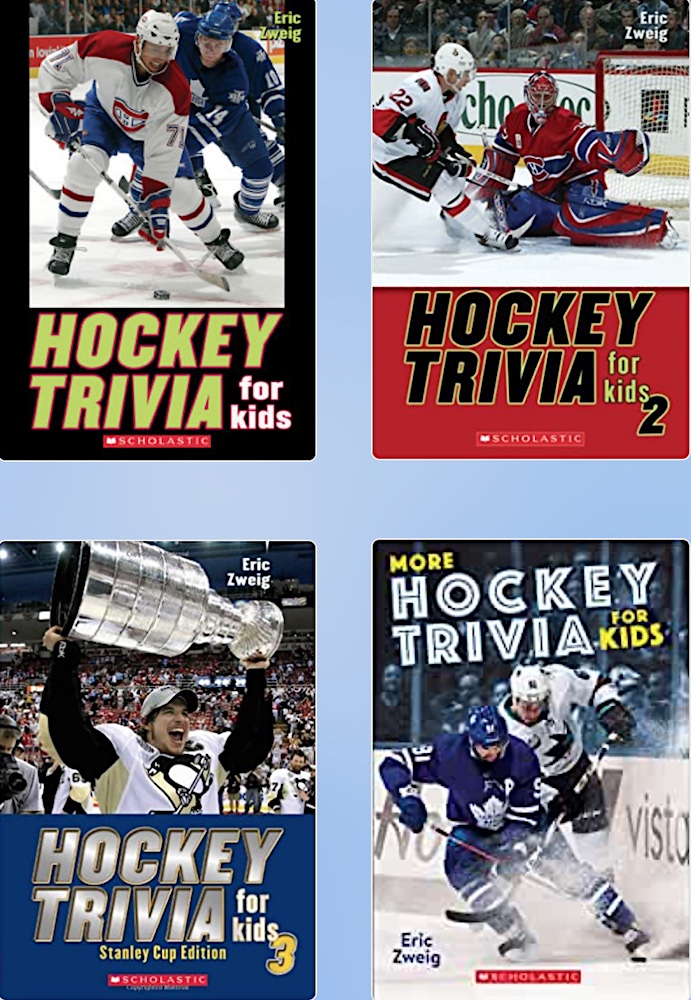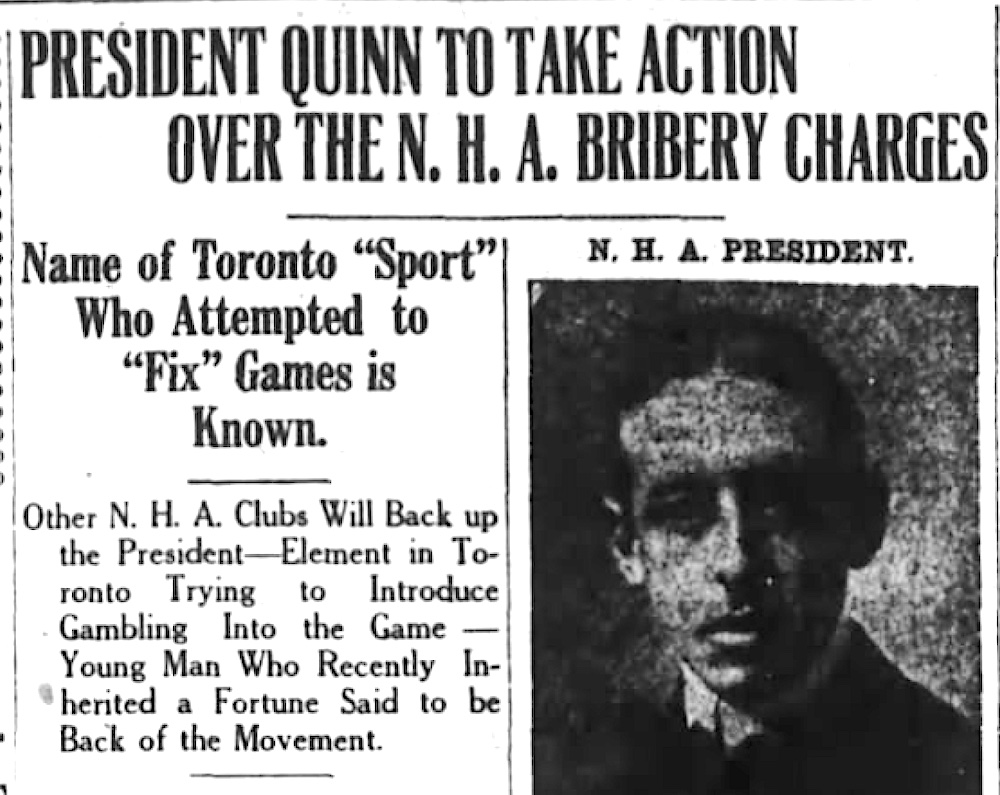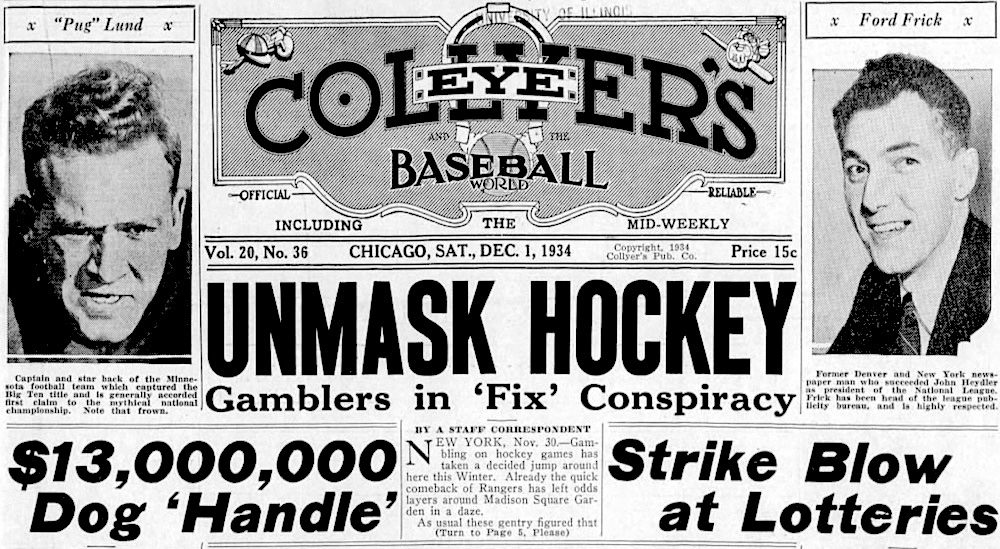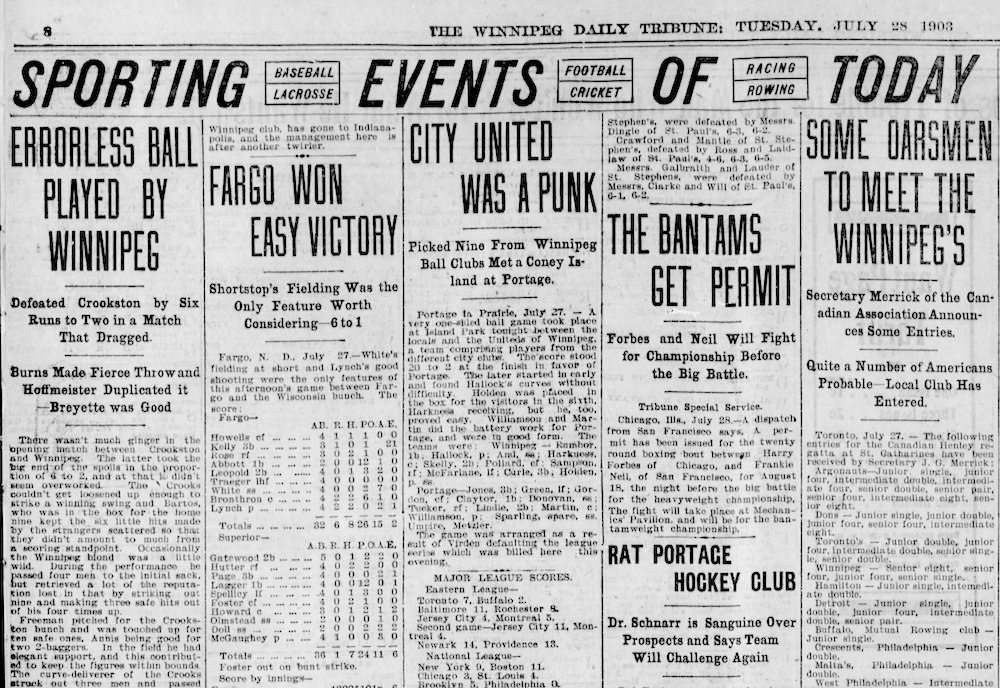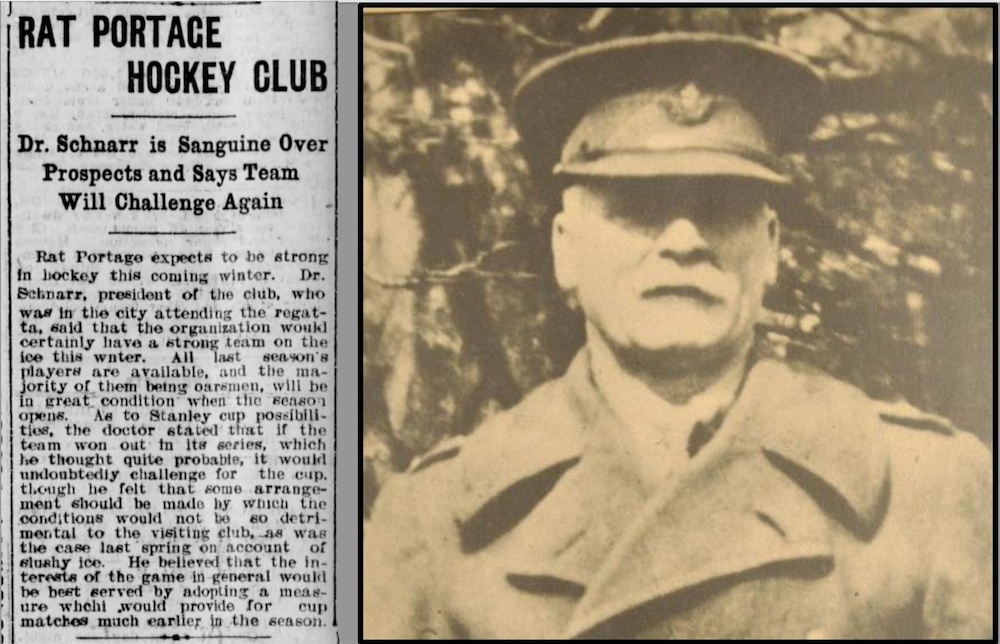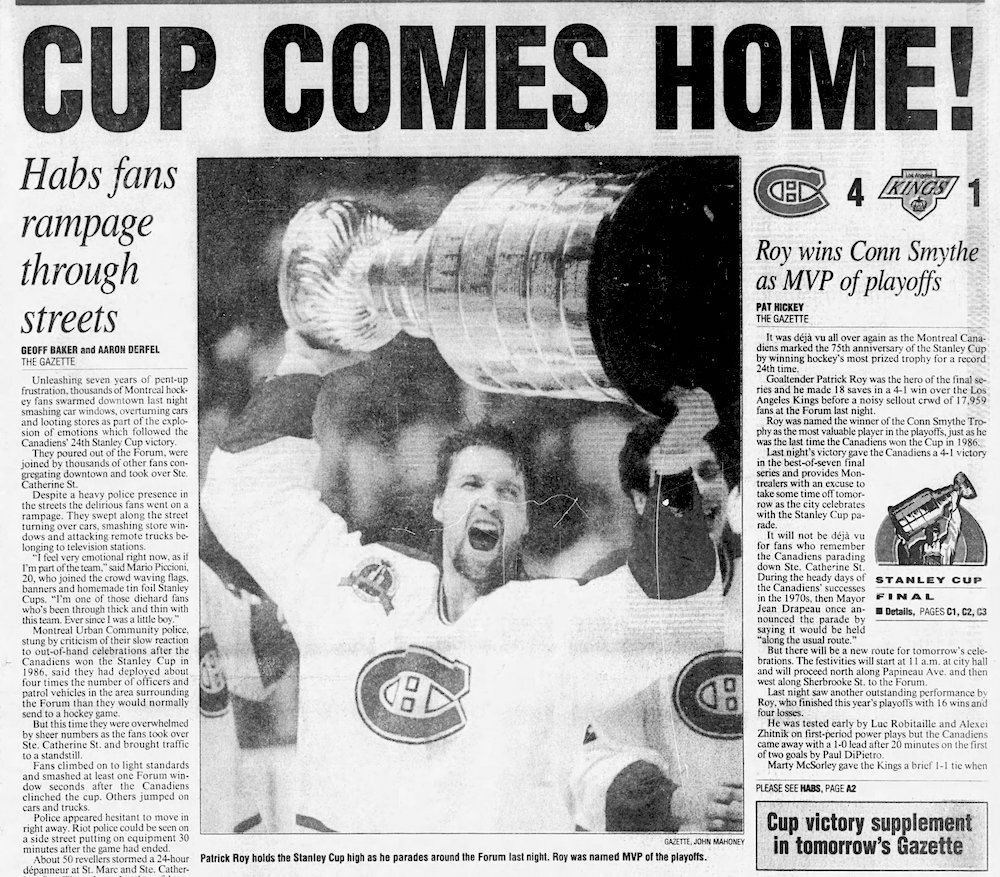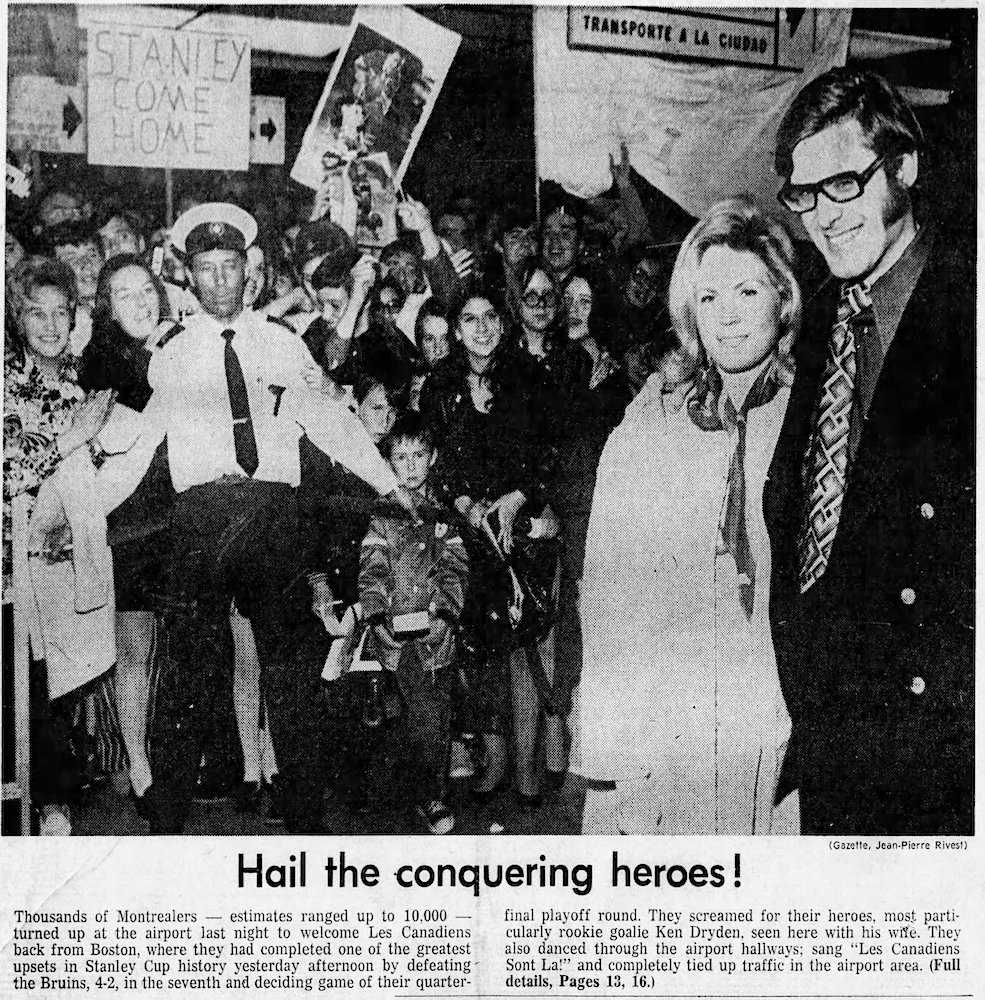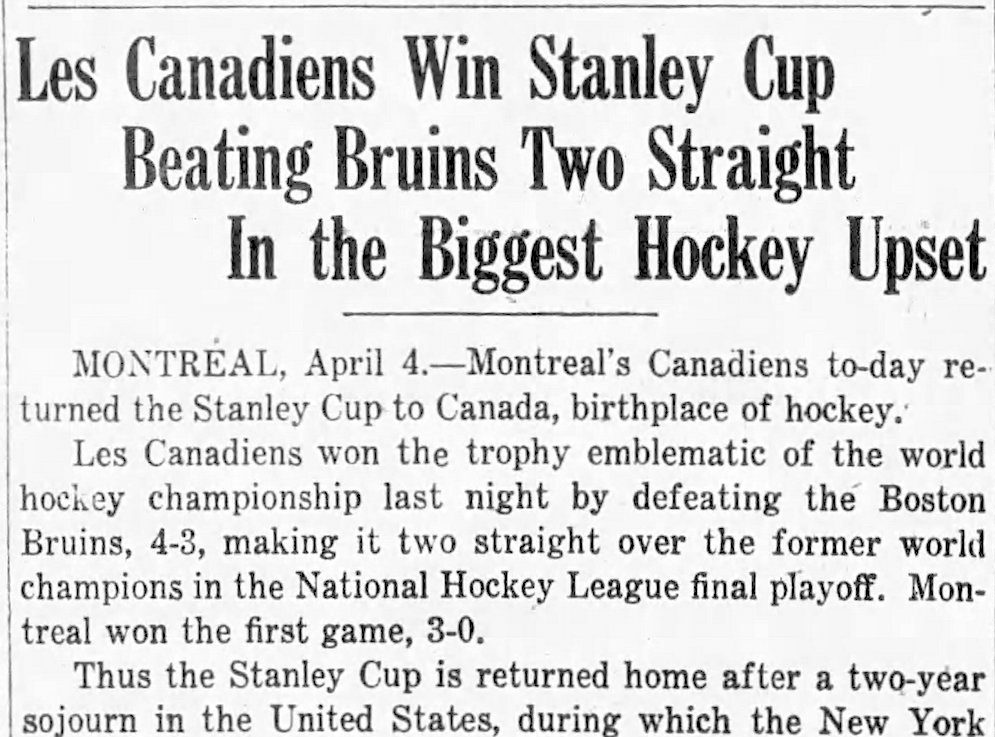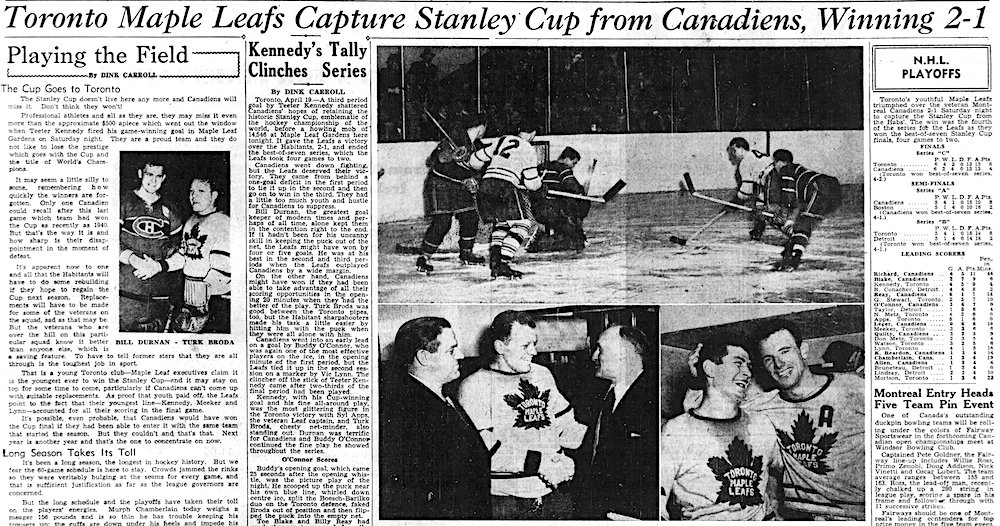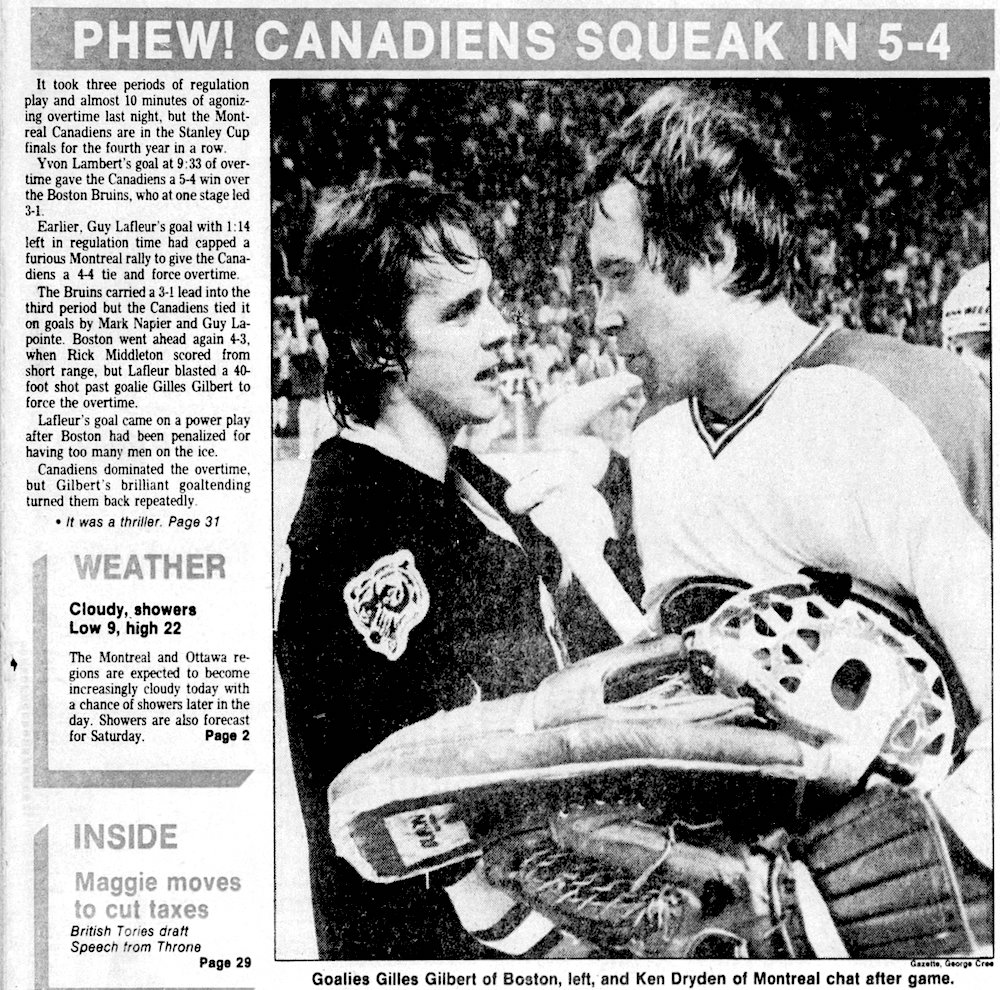I’ll admit that I was pleased with myself when I found that Merry Christmas/Happy New Year clipping I used in my year-end Holiday story three weeks ago. I’d found similar (ish) clippings to use for holiday stories in 2017 and 2019, but this one was fun because of the personal connections…
Similar to what I said in a story I posted about Lester Patrick last summer, any chance to poke around in the history of the Renfrew Millionaires is always fun for me because they were the team featured in my first book, Hockey Night in the Dominion of Canada. Really, so much of whatever I have accomplished/become in my “career” since that book came out in 1992 is attributable to the Millionaires. Probably no one since Bill O’Brien some 80 to 100 years ago has owed as much as I do to that legendary Renfrew team. (No idea who Bill O’Brien is? Check out the note and the end of this story.)
And, really, how can you ever go wrong with Sprague and Odie Cleghorn?

I’m sure I’d have hated them as hockey players. I’ve never been a big fan of the violence in the game, and they — especially Sprague — may have been the dirtiest players ever. Still, their names are just so much fun to say! My cat, Odie, was even named after the younger of the two Cleghorn brothers.
As it happens, I have a story about Sprague and Odie Cleghorn in the 2021 Hockey Research Journal of the Society for International Research which recently became available to members online. It’s about their season playing hockey in New York City during the winter of 1909-10. The brothers were from Montreal, but even Canada’s largest city was no match for The Big Apple, and the Cleghorns lived large once they got to Broadway! By season’s end, New York newspapers would accuse them of having too much fun to bother with practice and — although Odie led the league in scoring — blamed their lack of conditioning for their fondness for on-ice mayhem.
For his part, Sprague wasn’t impressed by the calibre of hockey played in America’s largest city, and, a year later, the brothers had no plans to play there again. So they had been receptive when George Martel of the Millionaires came to Montreal to woo them for the 1910-11 season.

“There couldn’t have been a bigger contrast in a world cruise than New York the winter before and Renfrew that winter,” Sprague would say in Maclean’s magazine on December 1, 1934, in the second of a four-part series on his life, “but once we settled down we liked the place.”
That had not been his first impression!
After signing their contracts in late December of 1910, Odie reported directly to Renfrew. Sprague “wanted a final whirl at Broadway, and … took the few dimes I had saved during the summer and spent them strutting my stuff among my New York friends.
“It was a bitter cold night … when I dropped off the train at Renfrew. I was wearing a light overcoat. Odie met me, peeking out over the top of a bale of sweaters…. I shivered and looked around. There was nothing to see but darkness.
“‘Good gosh!’ I said. ‘What is this?’
“My brother has a mean sense of humour. ‘This,’ he told me, ‘is Renfrew.’
“We walked out of the station to the cutter which Odie had borrowed…. I couldn’t see a house in sight, and I had just left Broadway and my ears were beginning to nip.
“‘I don’t think we’re going to like it here,’ I said.
“For twelve hundred dollars, we gotta like it,’ my brother told me.”
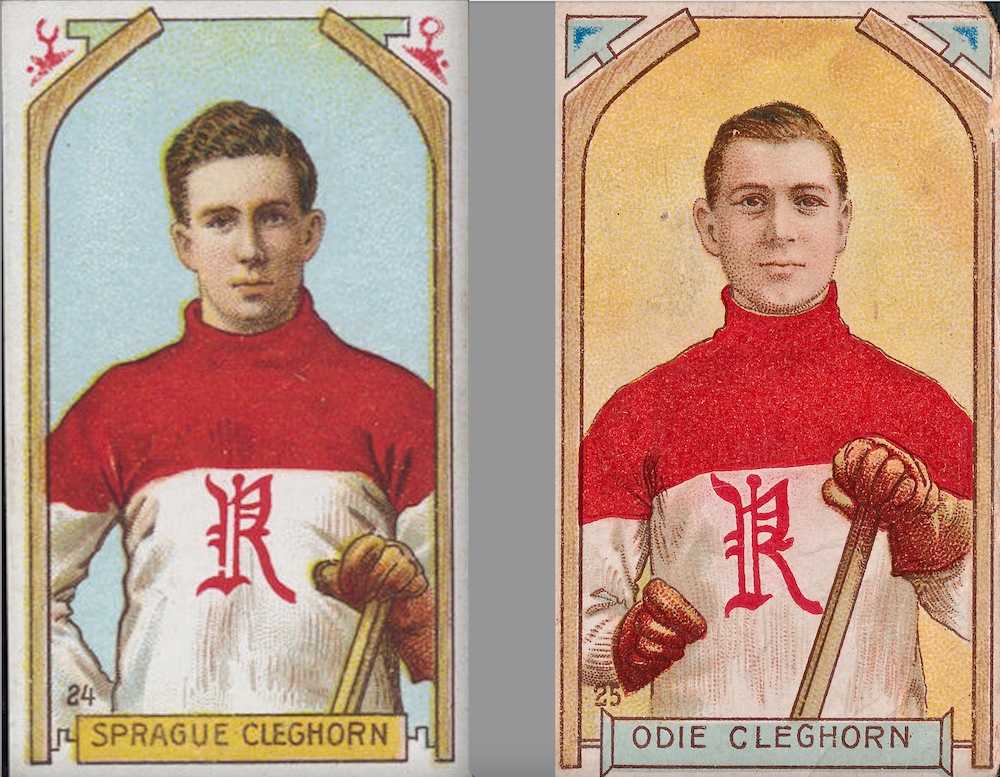
Sprague makes it clear that he and Odie were paid $1,200 apiece for the three months that constituted the 1910-11 hockey season. At a time when a working man might only earn half that amount for an entire year, this was a lot of money. It was a lot for a hockey player that season too, given that, after team owners had spent so freely the previous winter, the National Hockey Association (forerunner of the NHL) had imposed a salary cap of $5,000 per team (!!!) for 1910–11.
For comparison’s sake, it has long been said that the Renfrew Millionaires had spent $5,000 or more just to lure Cyclone Taylor to town from the Stanley Cup champion Ottawa Senators for the 1909–10 season. Sprague Cleghorn certainly though it was true. The thing that he liked most about Renfrew, he said, was that, “the men behind the club believed that money was for spending – and they spent it.”
“The story,” wrote Sprague, “is that M.J. O’Brien [no relation to Bill O’Brien], paid $5,000 for Cyclone Taylor’s jump from Ottawa. I never saw the documents, but if Renfrew wanted Taylor and Taylor wanted $5,000, that is what was paid.” In his own MacLean’s profile a few years earlier in 1931, Bill O’Brien had also stated that Taylor signed in Renfrew for $5,000.
But had he?
It seems to be well-recorded in hockey history that Renfrew paid Lester Patrick $3,000 for the 1909-10 season. It was more money, he would write, than he thought possible for playing hockey. Though some stories would say that his brother Frank received $3,000 as well, Lester wrote that his younger sibling received only $2,000.

their connection to my first book, Hockey Night in the Dominion of Canada.
Interestingly, the Renfrew Mercury of March 25, 1910, quotes an Ottawa story dated March 19 about how “all the members of the millionaire septet were paid off” before the team made a postseason trip to New York. Claiming the total salaries paid came to $18,000, the paper noted: “Lester Patrick was the highest paid player of the team, he drawing $2,700 and expenses… Frank Patrick and Fred Taylor got $2,000 apiece.”
So what had Taylor actually been paid?
Renfrew’s negotiations for Cyclone Taylor (and many other players) made news in papers all across Canada in December of 1909. It wasn’t very different from the stories about free agents in sports we see today. In its December 4 issue, the Montreal Gazette reported that Taylor had been offered the captaincy in Renfrew (which would go to Lester Patrick, who signed with the team and reported to town sooner than Taylor) and a contract for $2,000 plus an off-ice job valued at $1,200.
Two weeks later, on December 18, the Montreal Star joked that, “At the rate of $3,000 per [player], Renfrew must be glad that there are only seven men on a hockey team.” Yet the reports that day that Taylor had agreed to terms would prove false. When he finally did sign with Renfrew, it rated front-page news in Ottawa on December 29, 1909, in both the Citizen and the Journal. But neither paper reported on the value of the contract. Strangely, the Edmonton Journal of December 30 (with a story datelined from Ottawa the previous day), did.
“After several weeks of persistent dickering with Taylor, the Renfrew promotors landed him. Taylor left last night for Renfrew, where he will play this season. His salary is said to be even better than the famous Lester Patrick. Taylor will receive $3,000 for his hockey salary and a steady position at $1,200 per year.”
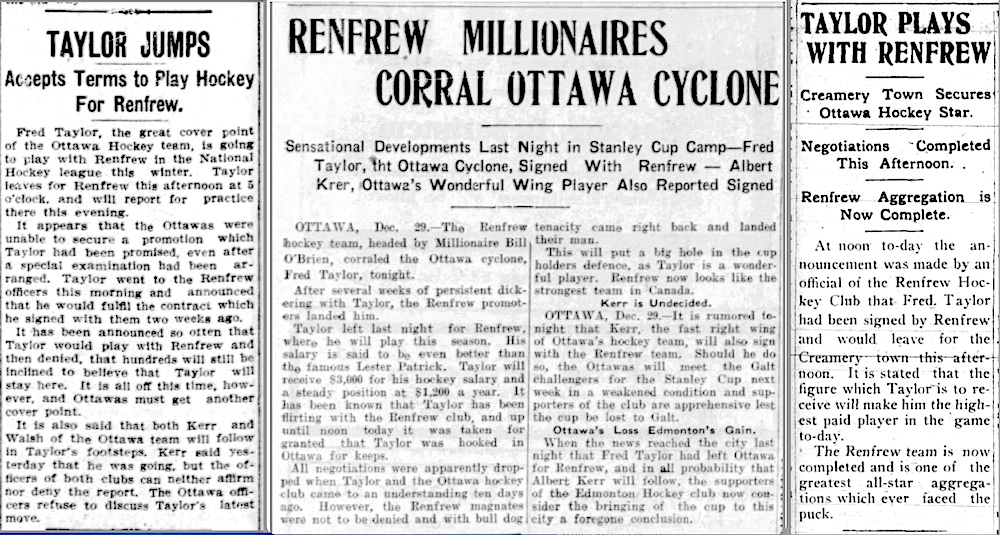
surround the newsier report from the Edmonton Journal the following day.
If that was true, then were does the talk of $5,000 come from?
The earliest reference I have found is in the Winnipeg Tribune from April 16, 1913. Taylor had just spent the 1912-13 season playing in Frank and Lester Patrick’s Pacific Coast Hockey Association (which they had formed in 1911–12) as a member of Frank’s Vancouver Millionaires. In a story (once again datelined from Ottawa the previous day) reporting that Taylor had decided to stay in Vancouver, it was noted that after winning the Stanley Cup in Ottawa in 1909, the Cyclone “was carried off by Renfrew” the following season “at a record breaking salary” said to be “$5,000 for two years service as a member of the Renfrew team.”
That would be only $2,500 per year … but a story on December 15, 1913, in the Brantford Expositor of all places, tells things very differently. A column headlined SPORTING COMMENT and written by someone identified as DOPESTER, reads:
“It is said that Cyclone Taylor got … $11,000 from the Renfrew hockey club during the two seasons he remained with them. A hockey fan who was on the inside in those days tells how Cyc worked the trick…. [He] was offered a contract for $3,000 by the creamery town and accepted; that is ancient history. For the next season the Ottawas were after him hot foot and the Renfrew bunch had to add a job, guaranteed to bring the Cyclone $5,000 a year. Taylor had the money deposited to his credit in a certain bank with the stipulation that he get it if the job was not forthcoming. Certain members of the Ottawa hockey club got busy and blocked the job part of the contract and the Cyclone, although he had a hard time, managed to collect his $5,000 from the bank. This is the way the story goes. Whether it is true or not only the Renfrew executive, Fred Taylor, and a couple of the Ottawa executive men know, and they probably wouldn’t tell.”
So, which story is true? Did Taylor make $2,500 a year for two years in Renfrew to reach the $5,000? Did he have a one-year contract for $3,000 plus a job paying him $1,200 for a total of only $4,200? Or did he actually make $3,000 per year for his two years in Renfrew, plus another $5,000 for the job he didn’t get?
It’s pretty much impossible to tell!
And what of the stories I haven’t even mentioned yet? That Taylor actually earned $5,250 during his first season in Renfrew in 1909–10? Where do those stories come from?
It appears those stories began in columns by Eric Whitehead in the Vancouver Province in the mid 1950s. Whitehead knew Taylor, and would write Cyclone Taylor: a Hockey Legend with him in 1977. In that biography/autobiography, Whitehead writes of the $3,000 contract offers “plus a soft job at $1,200 a year,” but states emphatically that Taylor signed for the sum of $5,250 which was deposited directly into his bank account before the start of play. Taylor told Whitehead that a friend, Jack McGinnis, did his negotiating and came up with the number, “although I don’t recall how he arrived at that particular figure.” Taylor also says that, “if I’d held out, I could have got a lot more money. They would have paid almost anything to get me, and they said so.”
Back in 1959, on a visit to his hometown of Tara, Ontario, not far from Owen Sound, Taylor spoke about his $5,250 contract for the 1909-10 season. Pictures of him appear on the front page of The Owen Sound Sun-Times on February 24, 1959, and in a story on page three, Taylor “ruefully admits his salary for succeeding seasons dropped considerably.”

It has seemed to me over the years that Taylor (or maybe Eric Whitehead) didn’t always get his stories right … but that much, at least, is true! Taylor never got that kind of money for playing hockey ever again.
When talk of the new salary cap dominated Canadian sports pages in November and December of 1910, much was made of what Renfrew would do. Having spent those $18,000 for an exciting team that had still finished behind Ottawa and the Montreal Wanderers in the race for the Stanley Cup, what kind of team would they have now for just $5,000? Neither Frank nor Lester Patrick would return, nor would other future Hall of Famers Newsy Lalonde and Fred Whitcroft. Taylor, it was said then, was still under contract from the previous season that called for him to be paid $1,800 this year.
Where does that number come from?
I’m not sure!
Still, assuming that Cyclone Taylor was paid $1,800 by Renfrew for the 1910-11 season, and that Sprague and Odie Cleghorn earned $1,200 a piece, that’s $4,200 of the $5,000 salary cap for just three players. In this era of 60-minute men, Renfrew really only needed seven regular players, but they employed 13 in all that season.
Did they pay 10 other men just $800 in total?
Probably not.
There are plenty of stories from the 1911-12 season saying that while the salary cap was still on the books, teams would likely ignore it as they had done in 1910-11. So Renfrew might have spent more. But there were also plenty of stories back in the fall of 1910 saying that a few of the Renfrew veterans (Larry Gilmour, Bobby Rowe, Herb Jordan and Bert Lindsay – the father of Ted Lindsay) were willing to stick around again for other considerations … which were likely offers of better off-ice employment in town.
Sort of puts a different twist on the “hometown discount” we hear about in sports these days, doesn’t it…
And as for Bill O’Brien, mentioned at the beginning of this story … he was a longtime sports trainer who worked for years with the Montreal Maroons and Montreal Canadiens in hockey, the Montreal Royals in baseball, and even a season with the Brooklyn Dodgers, between 1924 and his death at the age of 58 in 1944. Born in Papineauville, Quebec, in 1886, he arrived in Renfrew with his railway contractor father in the early 1900s. Around 1904 (although he says it was when he was 16 years old, so maybe 1902 if his birth year is correct), he became the trainer of the Renfrew team in the Ottawa Valley league. After spending the 1909-10 and 1910-11 seasons working with the Millionaires, he then worked for teams in Ottawa and around the Ottawa Valley for a couple of years before winding up in Montreal during World War I. He trained hockey and soccer teams for the companies he worked with until joining the Maroons when they entered the NHL in 1924. But, like me, it all started for O’Brien with Renfrew.
(P.S. Bill O’Brien was also the father of sportswriter Andy O’Brien, who was born in Renfrew.)
